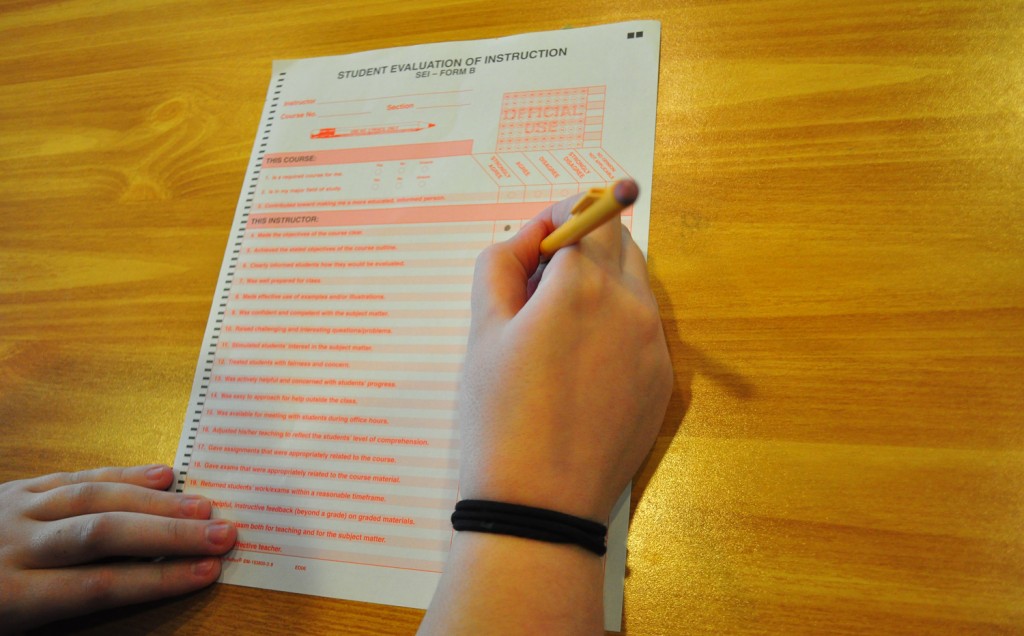

A trial run of a completely digital Student Evaluation of Instruction (SEI) form was recently administered to SUNY New Paltz students, leaving administration and faculty members encouraged by the results.
After months of planning, members of the Academic Affairs Committee and Institutional Research and Planning Department put together the digital forms after taking the concerns from students and faculty across campus into consideration.
Academic Affairs Committee Chair Janice Anderson said discussions of “revamping” the SEI forms had been taking place for 11 years, but the push to an online-only format came from college administrators last semester.
“They saw a paperless process as being more cost efficient,” Anderson said. “In last year’s budget environment, $30,000 was significant enough to consider it.”
While the online-only process – which ran from Oct. 12 to 19 – would save money, Assistant Vice President of Institutional Research and Planning Jacqueline Andrews said the Academic Affairs Committee and her department were worried with the amount of students who would fill out the forms.
“The biggest concern was the response rate from switching from the older method to a completely digital one,” Andrews said.
Anderson, who teaches four classes in the Communication and Media Department this semester, said she received a response rate of 47 to 62 percent, which was lower than her estimated 75 to 85 percent rate in the older format.
In an attempt to curb this, Anderson said the idea of a trial run was brought up as it would help alert students of the change in format for submitting their evaluations and allow faculty the chance to observe the new advantages she said were offered to them through an online format.
Michael Boms, an adjunct professor in the Biology Department, felt the SEIs should stay at the end of the year, but appreciates the opportunity for him to use the information.
“They are doing it mid-year so they are able to give evaluations before students get a grade and don’t impact what they say,” Boms said. “If they wait until the end, they will get a better idea of what a student feels, but now if I can get information quicker I can make changes to my class, perhaps.”
The proposal for a midterm SEI was published by the Academic Affairs Committee on March 30, 2011 and included three stipulations required for the switch to occur.
One of the conditions was that the data from the midterm practice run would be erased and reported only to the individual faculty members who administer them. This was included, Anderson said, to avoid Freedom of Information Law requests and not to allow practice run comments into faculty personnel files.
“I think there was a concern on the committees part that what happens at midsemester should stay at mid-semester,” Anderson said. “A way to ensure that is to gather the results and then erase them. It’s a good way to go about it because control rest with the faculty members.”
Other conditions addressed the concern of anonymity, both for students and faculty.
“Students were concerned that by logging into my.newpaltz.edu, they wouldn’t be anonymous,” Andrews said. “That is not the case. We had the option to capture ID tags when compiling the data, but made a conscious decision not to.”
Anderson agreed with Andrews and said she believed the online form was even more anonymous because professors would not be able to recognize the handwriting of particular students.
First-year undeclared student Renee Petrillo thought the SEIs being put up on my.newpaltz.edu was “repetitive” and thought it being online allowed students to go through them quickly, but was not concerned about being anonymous.
“It was probably the most efficient way to see what people think,” Petrillo said. “[But] it was too easy to just click the same choices for each teacher just to get it over with.”
